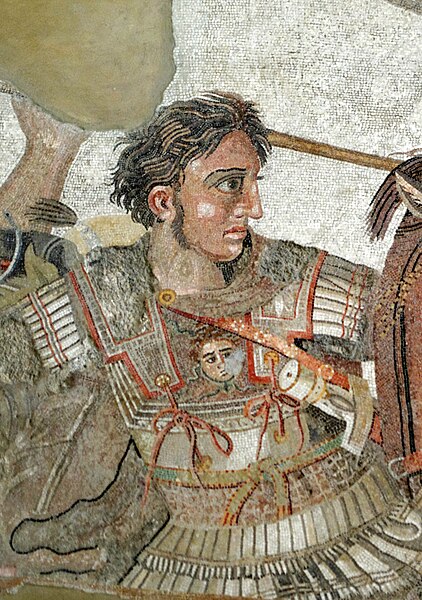The Indo-Greek Kingdom, or Graeco-Indian Kingdom, also known historically as the Yavana Kingdom (Yavanarajya), was a Hellenistic-era Greek kingdom covering various parts of modern-day Afghanistan, Pakistan and northwestern India. This kingdom was in existence from c. 200 BC to c. 10 AD.
Pataliputra Palace capital, showing Greek and Persian influence, early Mauryan Empire period, 3rd century BC.
Kandahar Bilingual Rock Inscription (Greek and Aramaic) by king Ashoka, from Kandahar, Afghanistan.
According to the Mahavamsa, the Great Stupa in Anuradhapura, Sri Lanka, was dedicated by a 30,000-strong "Yona" (Greek) delegation from "Alexandria" around 130 BC.
Greco-Bactrian statue of an old man or philosopher, Ai Khanoum, Bactria, 2nd century BC
In classical antiquity, the Hellenistic period covers the time in Mediterranean history after Classical Greece, between the death of Alexander the Great in 323 BC and the death of Cleopatra VII, followed by the emergence of the Roman Empire, as signified by the Battle of Actium in 31 BC and the conquest of Ptolemaic Egypt the following year. The Ancient Greek word Hellas was gradually recognized as the name for Greece, from which the word Hellenistic was derived. "Hellenistic" is distinguished from "Hellenic" in that the latter refers to Greece itself, while the former encompasses all ancient territories under Greek influence, in particular the East after the conquests of Alexander the Great.
Hellenistic period
The Nike of Samothrace is considered one of the greatest masterpieces of Hellenistic art.
Alexander fighting the Persian king Darius III. From the Alexander Mosaic, Naples National Archaeological Museum.
Alexander's empire at the time of its maximum expansion.








